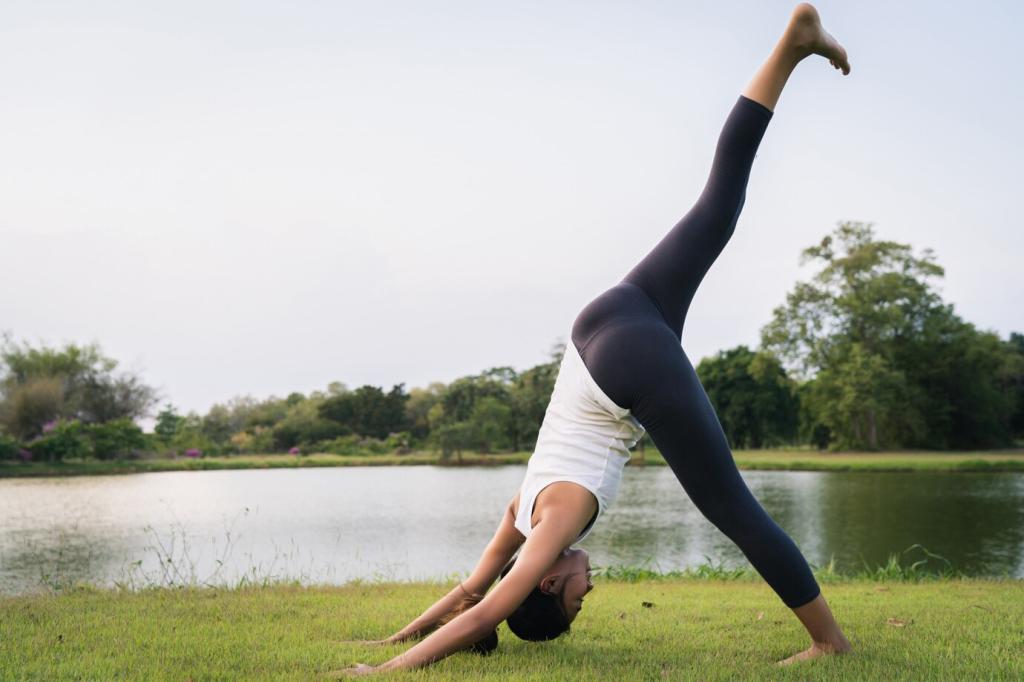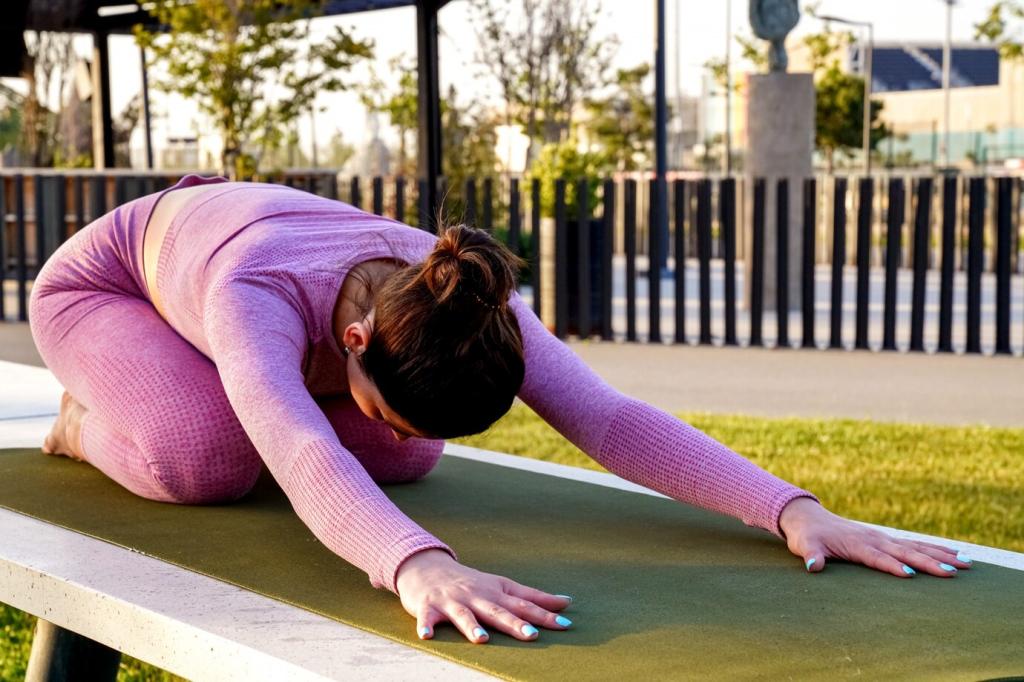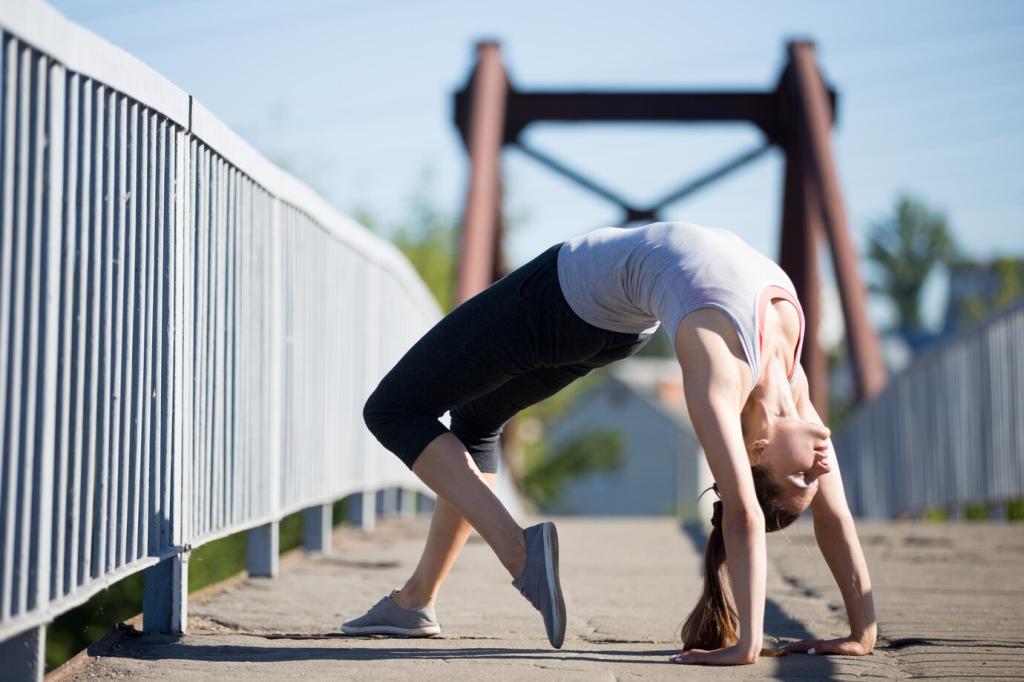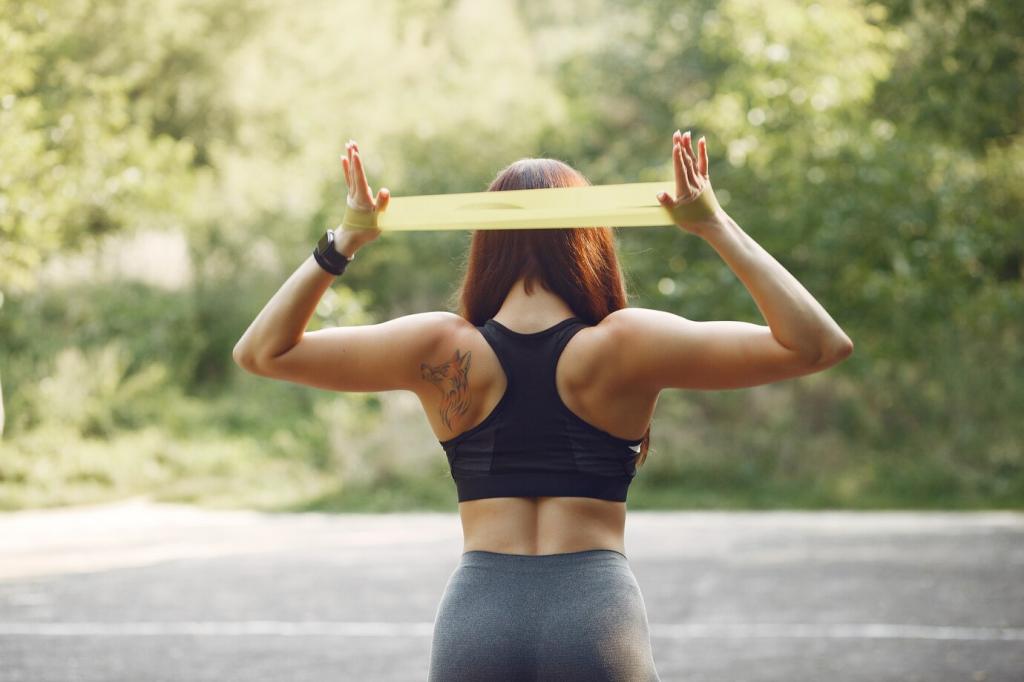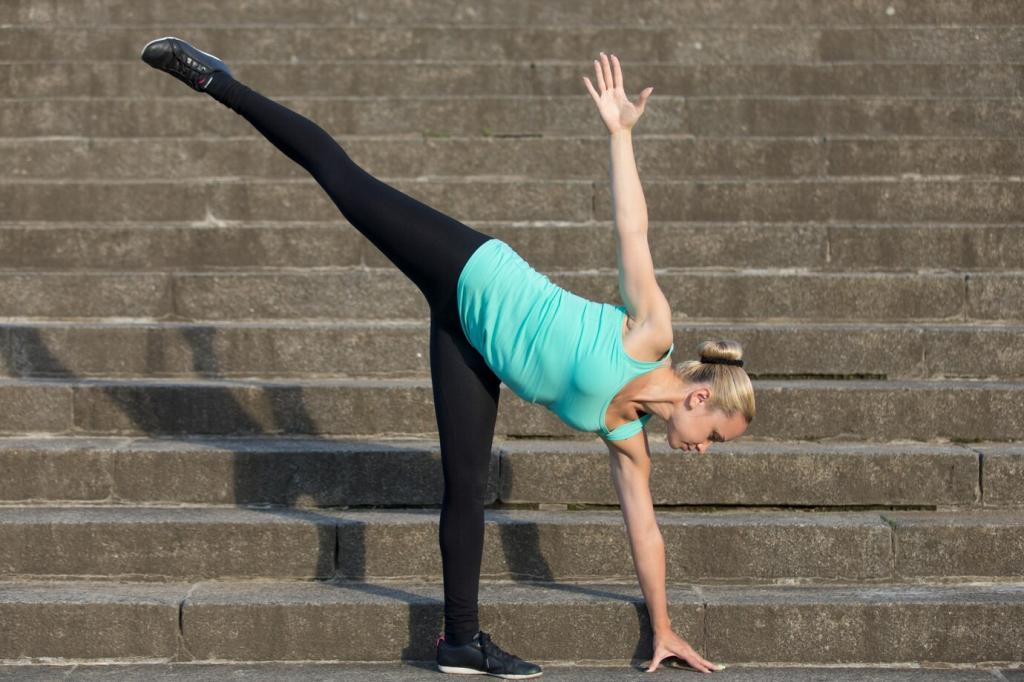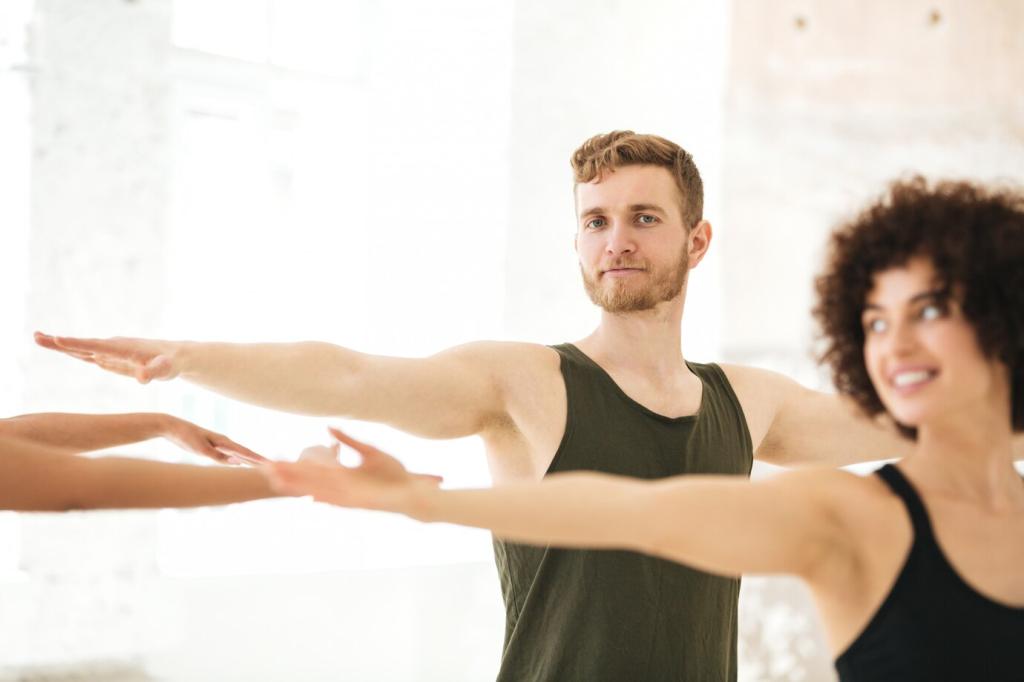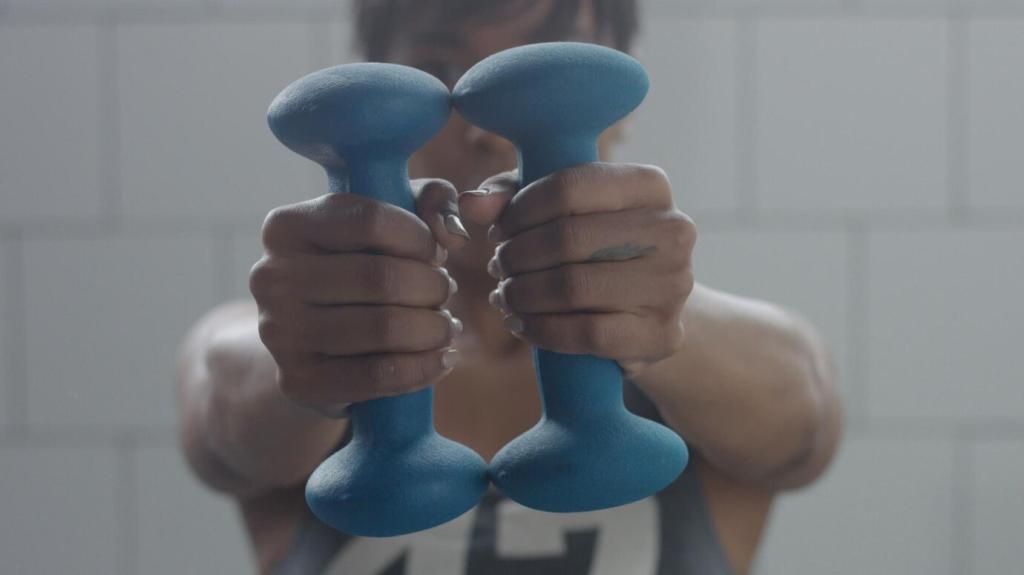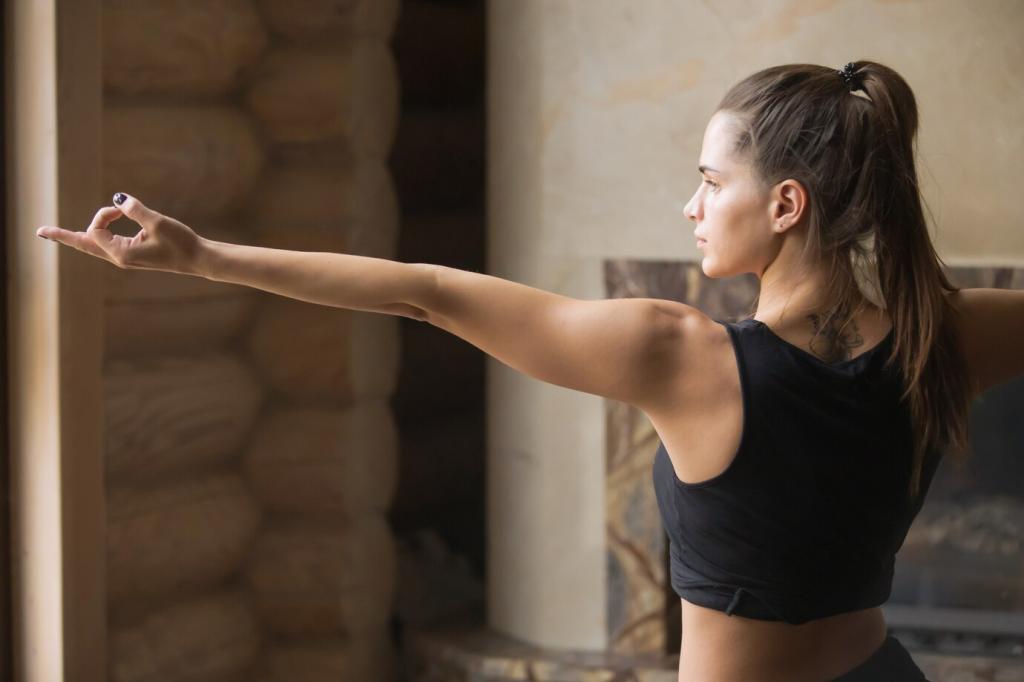Make It a Habit: Tracking, Micro-Wins, and Community
Tie your sequence to an existing habit—after coffee, before shower, or post-walk. Keep your mat visible. Celebrate completion with a checkmark, not perfection. Momentum loves easy, obvious cues.
Make It a Habit: Tracking, Micro-Wins, and Community
Use photo angles, sit-and-reach, and shoulder flexion wall tests monthly. Numbers motivate, but so does how your body feels standing up from a chair or reaching a top shelf comfortably.


